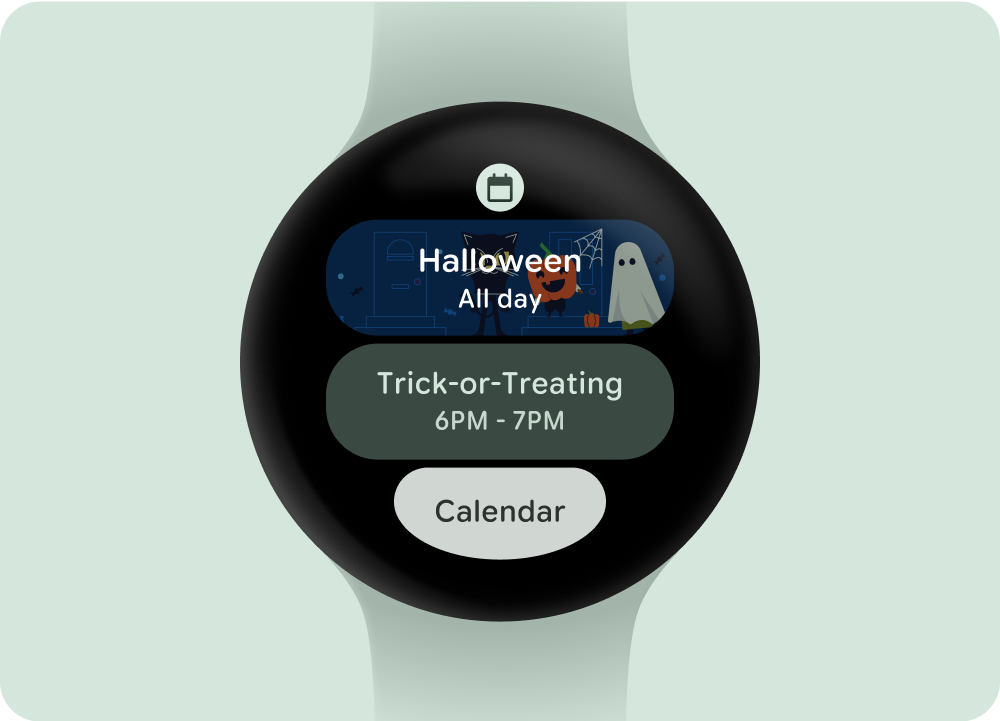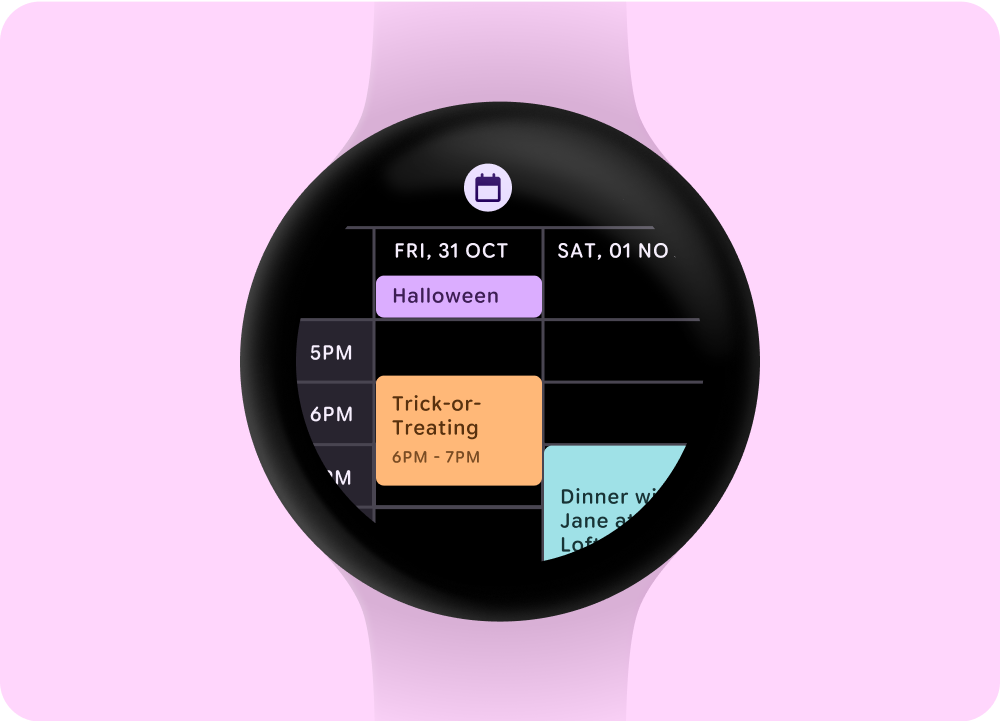As a wearable platform, Wear OS helps people live more present, healthy, and productive lives. Wear OS helps users stay connected online and complete tasks quickly, while leaving their phones in their pockets.
Understand use cases
Design apps for smartwatches that let users quickly access information, such as progress toward activity goals, and respond to instant messages. When designing apps for smartwatches, focus on these use cases. When designing apps for watches, consider platform capabilities and limitations.

Always
Design experiences where users can accomplish tasks smoothly using the watch interface, which presents unique opportunities compared to traditional mobile devices, including:
- Input enabled by a physical body connection, through sensors and motion detection.
- Quick access to glanceable information and actions, such as complications, notifications, and tiles.

Avoid
Don't create complex, detailed apps that include items like spreadsheets, as this is difficult to edit and view on a watch.
The watch also comes with limitations:
- Smaller screen space.
- Lower information density.
- Limited battery life.
Design for the round screen
Most Wear OS devices have round screens, which have 22% less UI space than square screens. Round screens also require larger margins to create more legible text.
- Consider constraints: Design for round devices first to make sure your layout works within the smaller size constraints.
- Test glanceability: People wearing watches are regularly in situations where their attention is limited, whether they are talking, gesturing, or running to catch a bus. Test your designs in situations that involve user movement and distraction to make sure the design is usable at a glance.
Resources
To learn more about designing for Wear OS, check out this video:
